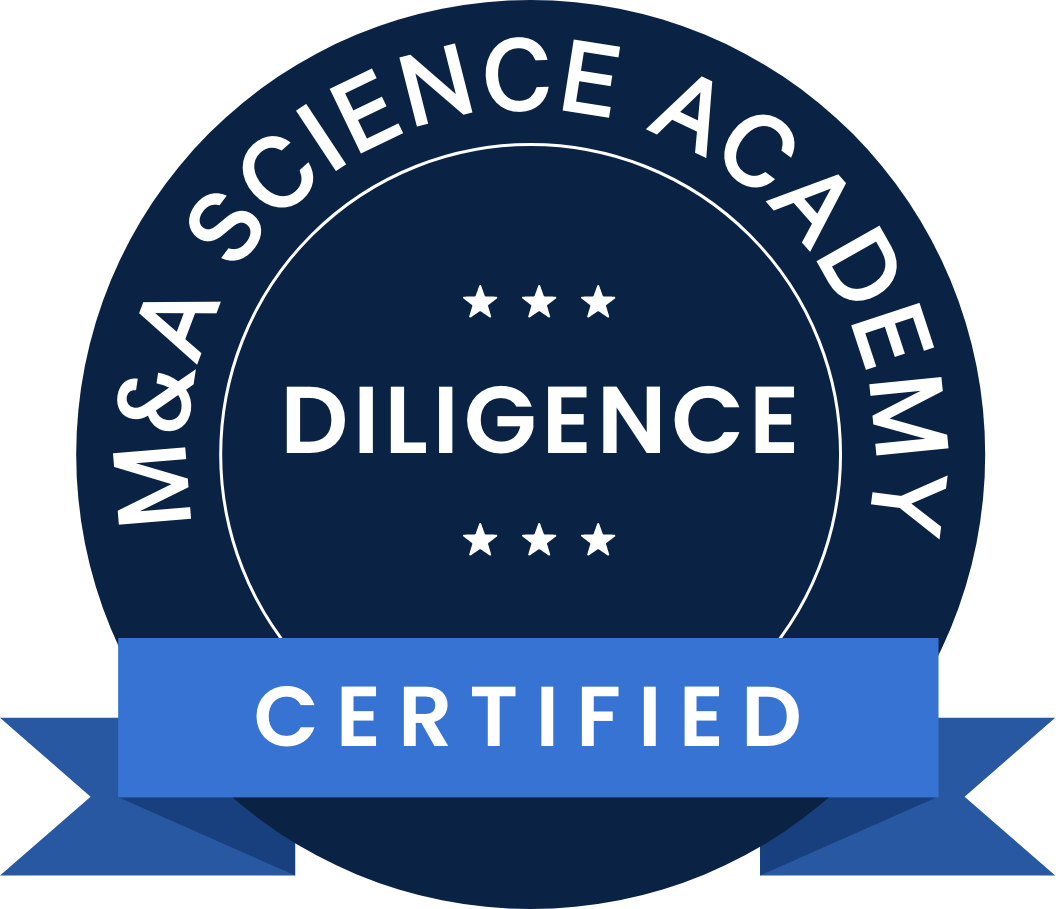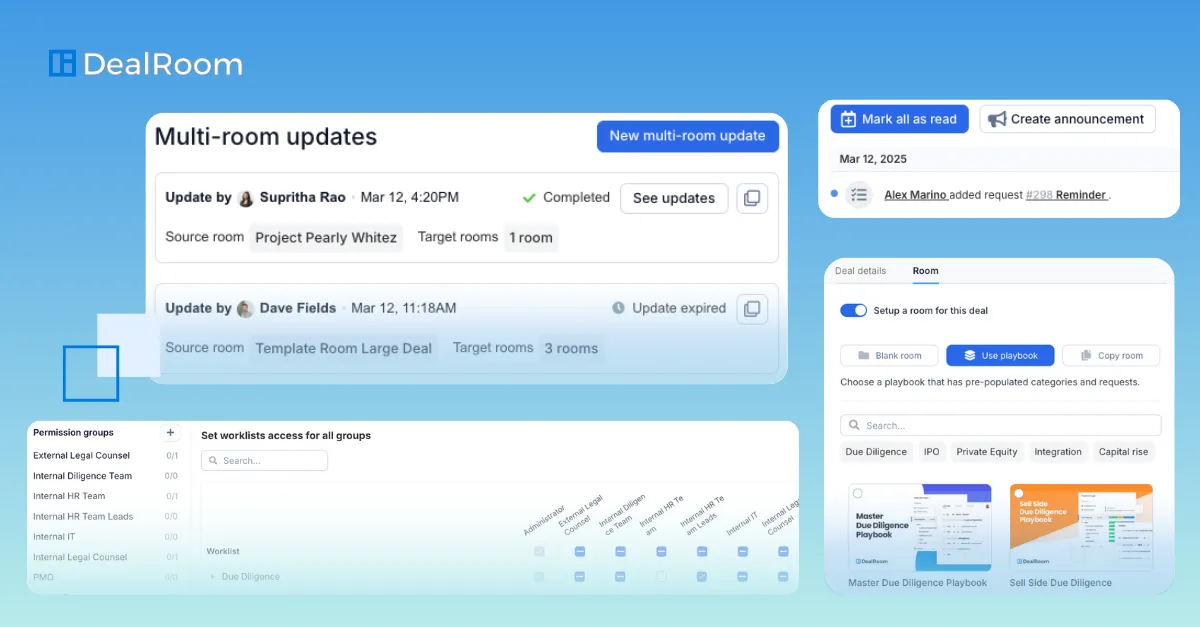Corporate roll-ups are gaining attention as companies combine multiple smaller businesses into a single, larger entity. Artificial intelligence (AI) now plays a major role in making these complex mergers more efficient by speeding up due diligence, standardizing operations, and improving decision-making.
As the number of roll-ups increases, organizations turn to AI tools to handle large amounts of data and automate routine tasks. AI also identifies strategic alignment among the acquired companies.
Recent trends show that companies use AI for everything from financial analysis to managing customer information across different systems. AI helps spot risks, predict costs, and ensure smoother integration after the roll-up. These advantages make roll-ups more appealing for investors and company leaders who want reliable information and faster results.
In this guide, we’ll explore examples of AI in corporate roll-ups, including the AI technologies used, key use cases, benefits, and future trends.
In this article:
What is a Corporate Roll-Up?
A corporate roll-up is a growth strategy where one company, known as the consolidator, acquires several smaller companies. These acquired companies usually operate in the same or closely related industries. This strategy allows the consolidator to leverage industry-specific expertise and drive operational efficiencies across a growing network of businesses.
Benefits of Corporate Roll-Ups

Roll-up strategies are often used in fragmented industries. In these markets, many small businesses exist, and no single company controls a large share. Rather than rely on slow organic growth, companies pursue roll-ups to rapidly expand market share, consolidate operations, and create a stronger, more competitive entity capable of scaling quickly.
A key benefit of the roll-up model is the ability to standardize and streamline operations across acquisitions. This includes merging systems, aligning processes, and centralizing functions like finance, procurement, and legal.
A great example of this strategy in action is IVC Evidensia, a leading veterinary care provider that executes over 300 roll-up acquisitions per year. To support this aggressive pace, the company relies on DealRoom’s AI-powered contract analysis to accelerate post-acquisition integration.
By automating contract review, IVC Evidensia saves 8–10 hours per acquisition. That time that would otherwise be spent manually analyzing hundreds of legal documents. This efficiency gain allows their corporate development team to scale faster while maintaining compliance and minimizing risk.
Roll-up strategies are widely used in industries such as dental practices, veterinary care, funeral services, and utilities, where repeatable operational models and standardized services make consolidation especially effective.
The table below highlights the main objectives of corporate roll-ups and how they’re achieved.
A successful roll-up strategy often relies on effective management and the ability to integrate new companies smoothly. Without good planning, roll-ups can face operational challenges or fail to deliver the expected cost savings.
For more background on roll-up strategies, see this overview of utilities consolidation.
AI Technologies Used in Corporate Roll-Ups
In corporate roll-ups, companies use several AI technologies to improve and streamline the integration process after company mergers.
- Machine learning helps find patterns in financial data. It detects duplication, improves forecasting, and identifies trends in operations, leading to better decisions during the roll-up process.
- Natural language processing (NLP) allows systems to understand and organize large amounts of text from contracts, employee records, and customer documents. NLP also makes it easier to review and combine information from different companies.
- Robotic process automation (RPA) automates repetitive tasks, such as data entry and report generation. Teams can focus more on higher-level planning because RPA reduces manual work.
- Predictive analytics looks at data from all companies involved in the roll-up to forecast outcomes like revenue growth, costs, or integration risks. This helps leaders set realistic expectations and avoid surprises.
The table below shows examples of how each AI technology is used in corporate roll-ups:
For more on industry trends in consolidation, see this business of consolidating industries report.
How is AI Used in Corporate Roll-Ups?

AI is transforming each stage of corporate roll-ups, from finding targets to optimizing post-merger performance. Here’s a look at some examples of how AI is used in corporate roll-ups.
Target Identification and Deal Sourcing
AI algorithms scan large datasets, such as financial reports and industry trends, to identify promising acquisition targets. Machine learning models (MLMs) spot patterns in competitor activity and predict which companies are likely candidates for a roll-up.
NLP enables AI to analyze news articles and earnings calls, helping detect market shifts, emerging growth, or business distress. Predictive analytics gives scores to potential targets based on factors like growth potential or possible synergies with the acquiring company.
These tools speed up and improve the quality of decision making in the earliest stages.
Due Diligence and Risk Assessment
AI plays a pivotal role in accelerating due diligence and minimizing risk during corporate roll-ups. It automates key tasks that traditionally consume time and introduce human error, especially when reviewing multiple acquisitions at once.
DealRoom AI enhances this process by applying natural language processing (NLP) to scan thousands of pages of legal, financial, and compliance documents in minutes. It flags risky clauses, missing signatures, indemnification language, and litigation history within a secure, centralized platform. Instead of manually combing through contracts, teams can focus their attention on high-risk areas already identified by the AI.
In financial due diligence, AI automates the review of balance sheets, income statements, and cash flow data, benchmarking performance against industry peers. It detects anomalies that may signal accounting irregularities or underperformance.
AI also plays a role in assessing cultural compatibility. By analyzing workforce data from internal surveys and external sources like Glassdoor, AI can highlight morale issues, misalignment in values, or integration risks that could impact post-merger performance.
Additionally, cybersecurity tools powered by AI assess IT infrastructure vulnerabilities (both internally and across third-party integrations), helping companies evaluate digital risk exposure before finalizing a deal.
Integration Planning and Execution
AI identifies operational strategic alignment by analyzing business processes. It suggests where automation or procurement changes can reduce costs.
Sentiment analysis provides insight into employees’ mood and perceptions and predicts attrition risk during integration efforts. Supply chain analytics highlight inefficiencies in logistics and vendor management. This makes the merged company run smoother.
Post-Merger Performance Optimization
Companies use automation and AI chatbots to streamline HR, finance, and customer service. Analytics integrate customer data from merged firms, supporting personalized marketing and improved retention.
AI continuously monitors key performance indicators and flags issues before they grow.
The table below highlights how AI is used for various corporate roll-up processes.
For more, see how AI is being integrated into the metaverse and corporate environments.
Benefits of Using AI in Corporate Roll-Ups

AI brings several advantages to corporate roll-ups by streamlining key steps and reducing manual tasks.
One major benefit is efficiency gains. AI tools automate data collection, analyze large volumes of information quickly, and help close deals faster. These improvements often lower transaction costs and improve process accuracy.
Another key benefit is enhanced decision-making. AI systems review company data and spot trends faster than humans can. They deliver data-driven recommendations that help executives choose which companies to acquire and how to combine them.
AI helps to improve decision-making by:
- Analyzing financial records for patterns
- Predicting market changes
- Evaluating company cultures for potential clashes
Risk mitigation is another strength of AI in roll-ups. Advanced algorithms alert teams to hidden risks or issues early, such as unexpected debts or legal problems. This allows leaders to manage problems before they grow.
Challenges and Considerations
High-quality data is essential for successful AI use in corporate roll-ups. Data often comes from different systems, which makes integration challenging. Inconsistent formats and missing values slow down the process and reduce accuracy.
Integrating data from multiple sources requires careful planning. Companies may need to clean, match, and combine records. They should set clear rules for data management and ownership.
AI tools can introduce ethical issues, such as bias in predictions or decisions. Businesses need to review AI systems to detect and reduce unfair outcomes. It’s also important to follow industry rules and data privacy laws, especially when handling personal data.
Companies should prepare employees to work with AI. This may involve training programs, regular workshops, or role changes. Employees need to understand how the tools work and how to use them safely.
Future Trends
AI is expected to play a greater role in upcoming corporate roll-ups. Companies want better ways to analyze large volumes of data, manage risk, and spot hidden patterns during acquisitions.
More businesses are using AI tools. Machine learning models predict market changes, streamline integration, and identify new opportunities. Machine learning is especially useful in due diligence, cost savings, and post-merger integration.
Integrating AI with other technologies is becoming more common. For example, combining AI with blockchain technology improves security and transparency in transactions.
Using AI with the Internet of Things (IoT) allows for deeper insight into operational data from each company in a roll-up.
Frequently Asked Questions
Can AI help identify potential acquisition targets?
AI reviews thousands of companies quickly using advanced data analytics. It looks at public financial records, market trends, news articles, and social media activity. This helps firms spot patterns or signs that a company is a good fit for acquisition.
Machine learning algorithms rank targets by key factors, such as profit margins, growth rates, and how well they match strategic goals. Some AI systems also track company valuations and predict which businesses might be open to selling. By automating these tasks, AI lets managers focus on stronger candidates and make more informed choices.
In industries with many small businesses, AI helps by spotting hidden opportunities faster than traditional methods.
What role does AI play in due diligence?
Due diligence often takes a lot of time, as teams check financials, legal issues, and other risks. AI scans large volumes of documents, contracts, and emails, highlighting terms or patterns that could signal problems.
Natural language processing tools flag unusual contract clauses or missing documents. AI also compares information from different sources, reducing the risk of missed details.
With AI, companies reduce manual work and speed up due diligence. It helps spot issues earlier and makes for smoother, safer transactions.
How does AI assist in post-merger integration?
After a deal closes, merging operations can be complex. AI tools help combine databases, clean up duplicate records, and line up business processes across different teams.
AI-driven project management software tracks integration milestones and predicts if a plan is falling behind. Algorithms also analyze new team structures, flagging areas where roles overlap or communication gaps may occur.
Some companies use AI to monitor employee feedback, checking for culture clashes or loss of engagement. This helps leaders react early and keep the merger on track.
What industries benefit most from AI in corporate roll-ups?
Industries with many fragmented providers or lots of data benefit the most from AI-driven roll-ups. These include healthcare, financial services, real estate, and utilities.
For example, private equity firms use AI in healthcare roll-ups to identify strong targets and track patient data trends. Retail and consumer services use AI to review market data and speed up decisions.
Sectors like energy and technology also find value when consolidating smaller firms for economies of scale. In markets where mergers happen often, AI helps with research, compliance, and strategy.
How can companies get started with AI in their roll-up strategies?
Companies new to AI should first review their current data sources. They need to organize financial, operational, and customer data.
After organizing data, companies can test basic AI tools. Examples include automated screening or document review software.
Some firms start with pilot projects focused on one part of the roll-up process. They can partner with AI vendors or consultants to speed up adoption and get training.
Companies should consider privacy and security. Clear data policies protect sensitive information during mergers.
Key Takeaways
- AI supports efficiency and accuracy in corporate roll-ups.
- Companies use AI for data analysis, risk detection, and process automation.
- Roll-ups with AI are becoming more common and attractive to investors.
AI is reshaping how companies execute corporate roll-ups—bringing speed, precision, and scale to what was once a highly manual, resource-intensive process. From identifying acquisition targets to optimizing post-merger performance, AI supports better decisions, reduces integration friction, and helps teams stay ahead of risk.
But unlocking AI’s full potential requires the right infrastructure. That’s where DealRoom comes in.
DealRoom’s M&A platform is built to support modern, tech-enabled roll-ups. It centralizes due diligence, automates repetitive tasks, and streamlines collaboration between teams and advisors. With features like document intelligence, real-time dashboards, and secure data sharing, DealRoom helps acquirers move faster—while staying organized and compliant at every stage. Request a demo today to learn more.



.webp)















.png)
.webp)



.webp)
.webp)
.webp)





.png)
.png)
.png)
.svg)

.svg)
.png)
